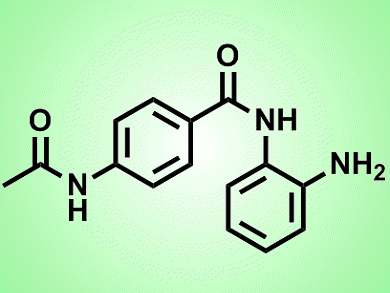Physical or psychological traumas generate memories that evoke fear and anxiety. An approach known as exposure-based therapy is commonly used to extinguish these memories. It involves recalling the traumatic event, as this process opens a time period where the original memory can be replaced by new ones. This strategy, however, is effective only against short-term memories. In contrast, long-lasting traumatic memories remain very difficult to attenuate.
A solution to this problem comes from a study conducted by Li-Hueu Tsai, Massachusetts Institute of Technology (MIT), Cambridge, MA, USA, and co-workers. The researchers demonstrated that, when administered during exposure-based therapies, Cl-994 (pictured), a substituted benzamide derivative, induces the brain to replace long-term traumatic memories with new ones. This effect arises from the ability of Cl-994 to inhibit histone deacetylase 2 (HDAC2), an enzyme that deacetylates DNA-binding proteins (histones). By inhibiting HDAC2, in fact, Cl-994 promoted the expression of genes involved in memory formation.
Cl-994 may, thus, represent a novel treatment to wipe out old traumas.
- Epigenetic Priming of Memory Updating during Reconsolidation to Attenuate Remote Fear Memories,
Johannes Gräff, Nadine F. Joseph, Meryl E. Horn, Alireza Samiei, Jia Meng, Jinsoo Seo, Damien Rei, Adam W. Bero, Trongha X. Phan, Florence Wagner, Edward Holson, Jinbin Xu, Jianjun Sun, Rachael L. Neve, Robert H. Mach, Stephen J. Haggarty, Li-Huei Tsai,
Cell 2014, 156, 261–276.
DOI: 10.1016/j.cell.2013.12020




